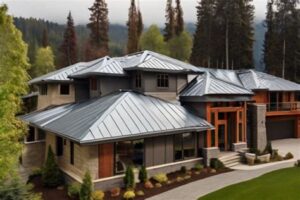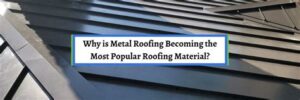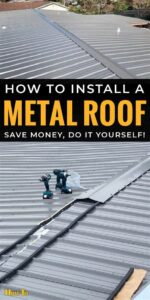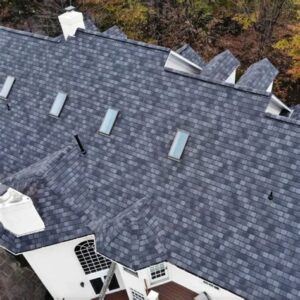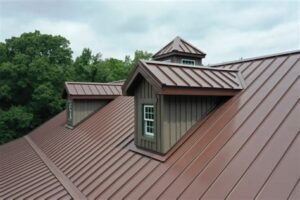When it comes to choosing the right roofing material, metal roofs have surged in popularity for their durability and longevity. However, understanding the intricacies of metal roof pricing is essential for homeowners looking to make informed decisions. In this article, we will explore the pros and cons of metal roofs in terms of their cost, initial investment, and long-term savings. While metal roofs may require a higher upfront expense, they offer significant economic benefits over time. Additionally, energy efficiency is another pivotal aspect that contributes to their overall value. By comparing these factors with other roofing materials, we aim to provide you with a comprehensive understanding of what to consider when evaluating metal roof pricing. Join us as we navigate these essential considerations in your roofing journey.
Understanding The Pros Of Metal Roof Pricing
When evaluating The Pros of metal roof pricing, it’s essential to consider various factors that can influence your decision beyond just the initial outlay. One of the primary advantages is their durability; metal roofs are designed to withstand severe weather conditions, including heavy snow, high winds, and even hail, which often results in fewer repairs and replacements over time.
Additionally, the longevity of metal roofs is a significant pro. Unlike traditional roofing materials that may need replacement every 15-20 years, metal roofs can last 40 years or more with minimal maintenance. This extended lifespan can translate into substantial savings when comparing the total cost of ownership over time.
Another benefit of metal roofs is their lightweight nature, which reduces the structural load on your home. This can lead to savings during installation, as you may not need to reinforce your existing roofing structure, making the investment more economical in the long run.
Moreover, the energy efficiency that metal roofs offer can contribute to long-term savings on your energy bills. They reflect solar heat, which can lead to cooler indoor temperatures, thereby reducing the reliance on air conditioning during hot months.
While the upfront costs of metal roofing can be higher than more common options like asphalt shingles, the potential for a higher return on investment through increased property value should not be overlooked. Homebuyers often view metal roofing as a premium feature, potentially making your home more attractive on the market. These aspects collectively make it clear why understanding the pros of metal roof pricing is crucial in your decision-making process.
Initial Costs: Pros And Cons To Weigh
When considering a metal roof, one of the primary factors that homeowners and builders evaluate is the initial costs. The expenses related to installing a metal roof can vary significantly based on several variables. Here we explore the pros and cons associated with these costs, allowing for a well-rounded decision.
Pros:
- Longevity: Metal roofs generally last much longer than traditional roofing materials, such as asphalt shingles. While the initial cost may be higher, the lifespan can justify the investment.
- Durability: The durability of metal roofs means fewer repairs and replacements over the years, contributing to long-term value.
- Increased Home Value: Installing a metal roof can significantly enhance your home’s resale value, offering a good return on investment.
Cons:
- Higher Upfront Cost: The initial installation costs of metal roofing can be steeper than alternatives like asphalt shingles, which can deter some homeowners.
- Potential Installation Complexity: Depending on the complexity of the roof design, the installation process can require specialized labor, which may further increase costs.
- Climate Considerations: In regions with extreme weather conditions, additional structural supports may be necessary, leading to higher initial costs.
Weighing these pros and cons can help homeowners make a more informed decision regarding the costs associated with metal roofing, aligning their choice with their budget and long-term roofing plans.
Long-Term Savings: The Economic Pros Of Metal Roofs
When considering The Pros of metal roofing, long-term savings play a crucial role. While the initial investment might be higher than traditional roofing materials, the longevity and durability of metal roofs translate into significant economic advantages over time.
| Factor | Metal Roofs | Asphalt Shingles |
|---|---|---|
| Typical Lifespan | 40-70 years | 15-20 years |
| Maintenance Costs | Low | Moderate to High |
| Energy Savings (Annual) | 10-25% | 0% |
The longevity of metal roofs means homeowners won’t need to replace their roofing as often, which reduces the total cost of ownership. On average, a metal roof can last more than 50 years, compared to a typical asphalt shingle roof, which may need replacing after 20 years.
Additionally, metal roofs are often coated with reflective materials that contribute to their energy efficiency. This not only helps in saving on cooling costs during the summer but can significantly reduce overall energy bills. Some studies suggest homeowners can save between 10% to 25% on their annual energy costs after installation.
Moreover, the durability of metal roofs reduces repair costs incurred from weather damage. They are resistant to extremes such as heavy winds, hail, and snow, which minimizes the chances of needing repairs or replacements.
While the upfront cost of metal roofing might seem steep, the long-term savings through durability, low maintenance, and energy efficiency clearly highlight some of the top The Pros of investing in metal roofs. Homeowners looking to maximize their investment would do well to consider these economic benefits.
Energy Efficiency: How Metal Roofs Offer Significant Pros
When considering the overall efficiency of roofing materials, metal roofs stand out significantly in terms of energy performance. One of the key pros of metal roofing is its ability to reflect solar radiant heat, which can substantially decrease energy costs for homeowners.
Metal roofs can be coated with reflective paint that enhances their energy efficiency. This reflective quality helps in keeping indoor spaces cooler, particularly in hot climates, thereby reducing the reliance on air conditioning systems. As a result, homeowners often witness a dramatic reduction in energy bills during the summer months.
Furthermore, metal roofs are designed with thermal insulation properties that contribute to maintaining a comfortable indoor environment. The insulation works effectively to keep the heat inside during the winter and outside during the summer, further supporting energy savings year-round.
In regions where the climate varies dramatically between seasons, the advantages of metal roofs continue to shine. Many homeowners report considerable pros when switching to metal roofs, including a reduced carbon footprint and lower energy consumption in their residences.
Overall, the energy efficiency of metal roofs not only results in cost savings but also promotes a more sustainable lifestyle, showcasing one of the most compelling pros of investing in metal roofing for your home.
Comparing Metal Roof Pros With Other Roofing Materials
When considering roofing options, it’s essential to evaluate how metal roofs stack up against traditional materials like asphalt shingles, wood, and tile. Below is a comparison table that highlights the key aspects of metal roofs compared to these popular alternatives.
| Roofing Material | Durability | Cost | Energy Efficiency | Maintenance |
|---|---|---|---|---|
| Metal Roofs | Very High | Higher Initial Cost | Excellent | Low |
| Asphalt Shingles | Moderate | Low Initial Cost | Average | Moderate |
| Wood | Moderate | Moderate to High | Poor | High |
| Tile | High | High | Good | Moderate |
The pros of metal roofing shine especially when durability and long-term value are considered. While the initial cost may be higher, the longevity of metal roofs often surpasses that of their more traditional counterparts. Metal roofs can last 50 years or more, compared to the 20-30 year lifespan you might expect from asphalt shingles, making them a wise investment for homeowners planning to stay in their homes for the long haul.
In terms of energy efficiency, metal roofs outperform many traditional materials, reflecting solar heat rather than absorbing it, which can significantly lower cooling costs. When balancing factors such as maintenance, longevity, and energy savings, metal roofing emerges as a strong contender for homeowners seeking both functionality and aesthetic appeal.
In conclusion, while each roofing material has its advantages, the pros of metal roofs—including durability, energy efficiency, and low maintenance—often make them the superior choice in the long run.
Frequently Asked Questions
What are the main advantages of metal roofs?
Metal roofs are known for their longevity, durability, and energy efficiency. They can last up to 50 years or more, resist extreme weather conditions, and can reflect solar heat to reduce cooling costs.
How do metal roof prices compare to traditional roofing materials?
While metal roofs typically have a higher upfront cost compared to traditional shingles, their longevity and low maintenance needs can make them more cost-effective over time.
Are there different types of metal roofs available?
Yes, there are several types of metal roofing, including steel, aluminum, copper, and zinc, each with its own price range and aesthetic appeal.
What factors should I consider when evaluating metal roof prices?
Factors include the type of metal, the complexity of the installation, geographic location, and potential warranties offered by manufacturers.
Do metal roofs require special maintenance?
Generally, metal roofs require less maintenance than traditional roofs, but it’s advisable to conduct periodic inspections and clean any debris to ensure optimal performance.
How does the installation process of a metal roof differ from other roofing materials?
Metal roof installation typically requires specialized skills and tools, which can affect labor costs. It’s important to hire a qualified contractor for proper installation.
What are the potential downsides of choosing a metal roof?
Some downsides include the initial cost, potential for noise during rain or hail, and the fact that it may dent more easily than some durable materials, depending on the type of metal chosen.
